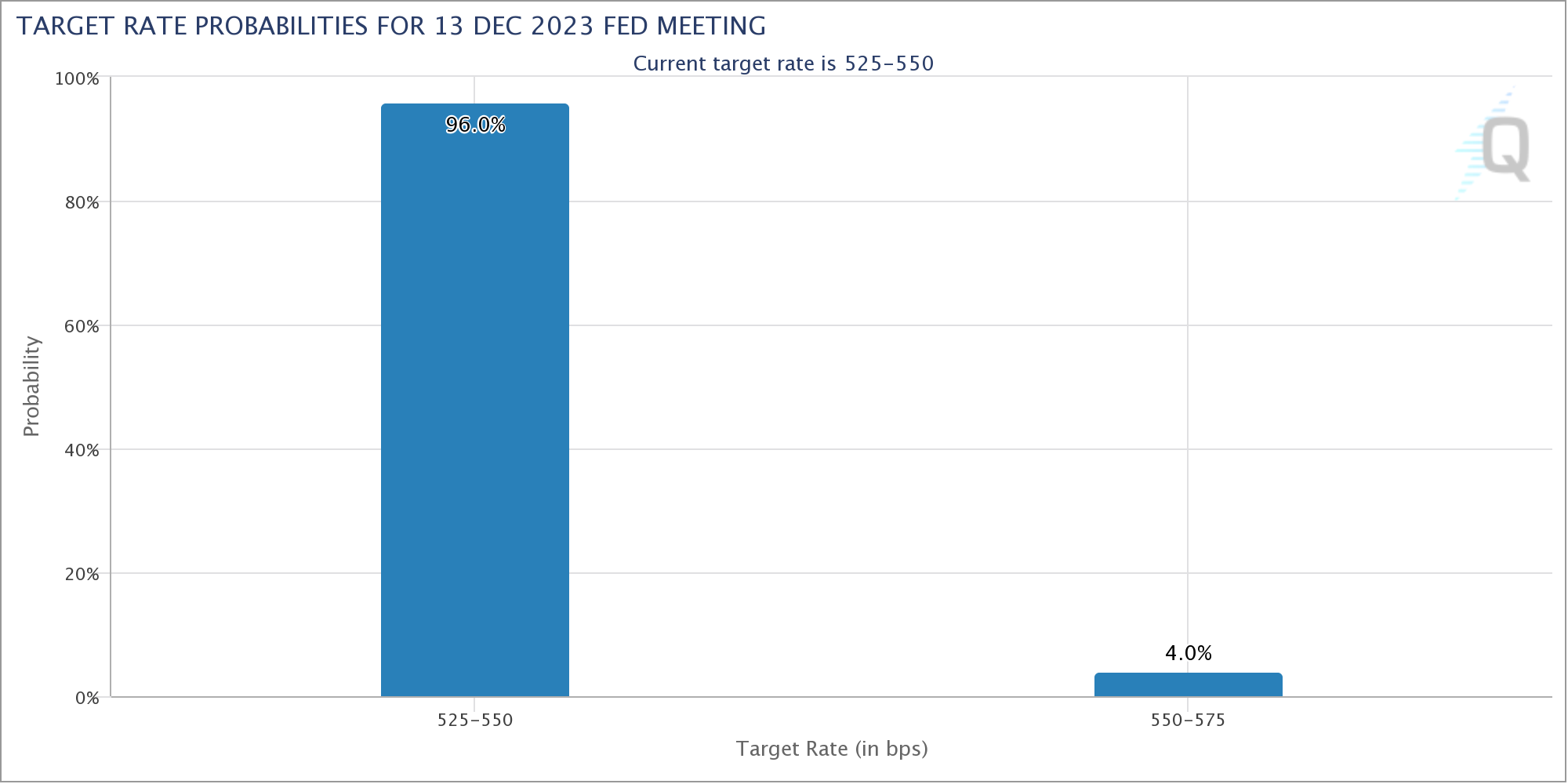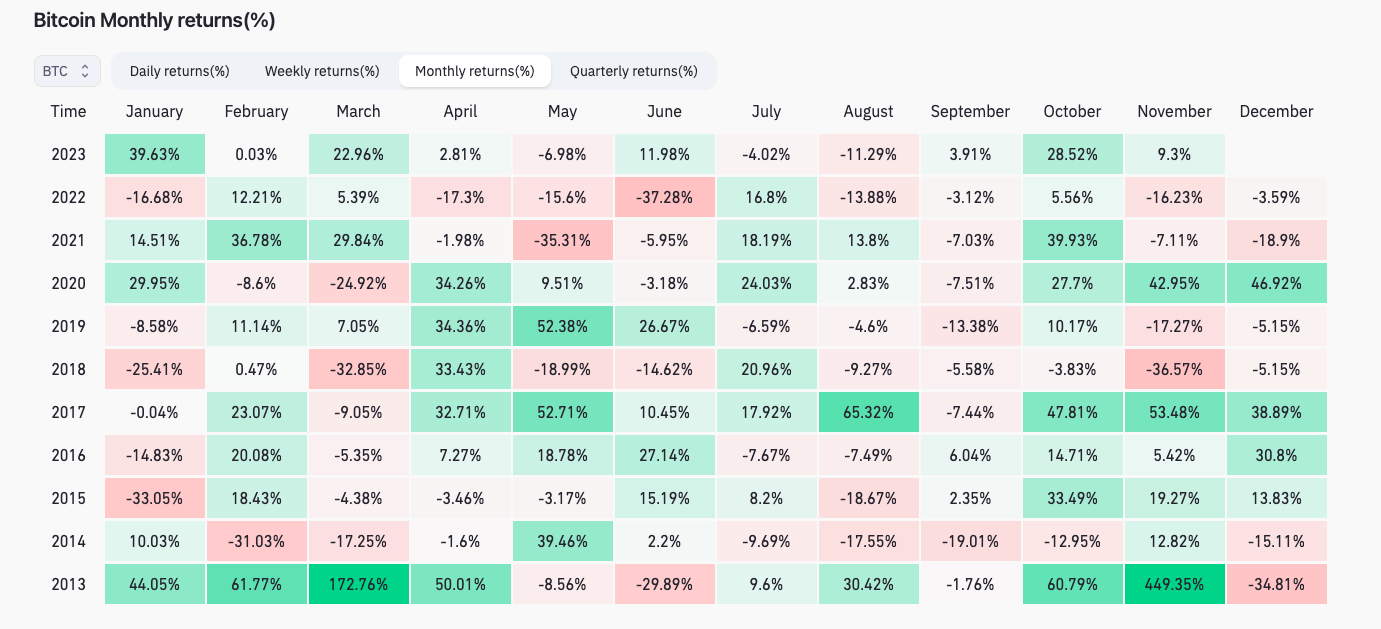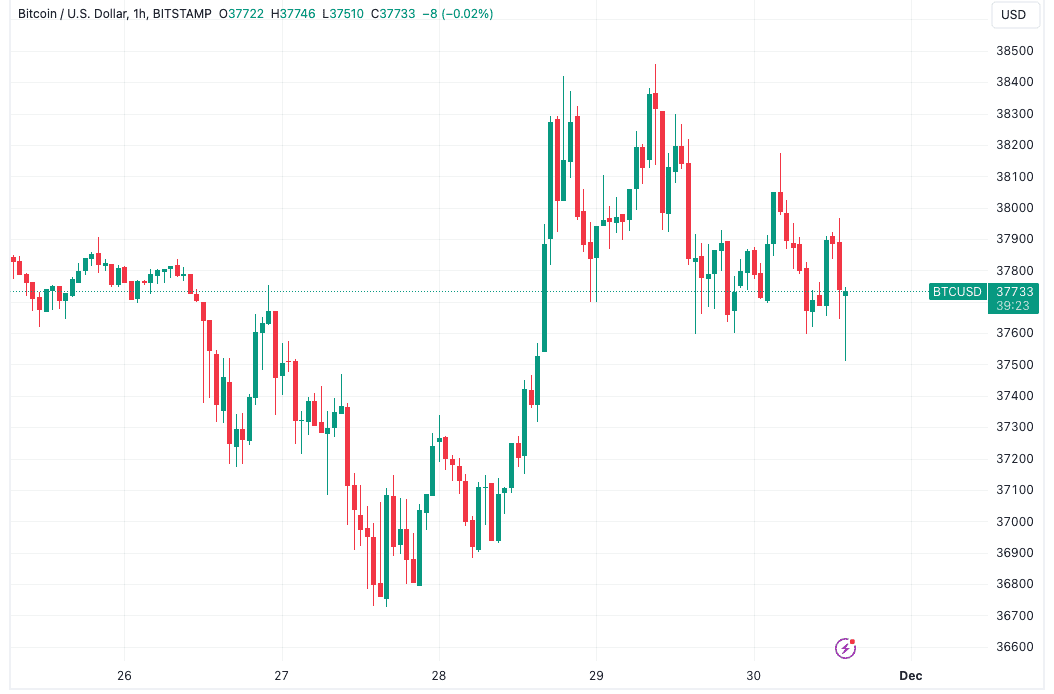Bitcoin (BTC) brushed off fresh United States macro data into the Nov. 30 Wall Street open as traders focused on the monthly close.
PCE keeps Fed pivot pressure alive
Data from Cointelegraph Markets Pro and TradingView showed BTC price movements sticking to a narrow intraday range below $38,000.
After a failed breakout the day prior, hopes were high that the Federal Reserve’s “preferred” inflation metric, the Personal Consumption Expenditures (PCE) Index, would help fuel volatility.
This, however, had not come to pass at the time of writing, with November’s final Wall Street open still to come.
PCE came in broadly in line with expectations — a boost for the Fed’s monetary tightening and reinforcement of declining inflation.
Querying whether interest rates might now begin to fall — the key takeaway for risk assets — financial commentary resource The Kobeissi Letter nonetheless stayed cautious.
“Another sign inflation is falling but still above the Fed’s 2% target. Can the Fed really pivot now?” it queried on X (formerly Twitter) after the PCE results.
Kobeissi once again alluded to words from Bill Ackman, founder and CEO of hedge fund Pershing Square Capital Management, who earlier in the week predicted rate cuts beginning as soon as Q1, 2024.
“It’s important to note that the effects of monetary policy lag. However, does the Fed really want to risk jumping the gun and cutting rates too soon?” it continued.
“We believe calls for rate cuts in Q1 2024 are too ambitious.”

PCE did not manage to dent market expectations of Fed policy, with data from CME Group’s FedWatch Tool still showing almost unanimous expectations of a rate hike pause continuing next month.
November BTC price gains near 10%
For Bitcoin market participants, however, the monthly close was of more interest.
Related: Bitcoin ETF will drive 165% BTC price gain in 2024 — Standard Chartered
BTC/USD was up nearly 10% in November at the time of writing, making it the first “green” 11th month of the year since 2020. Above $37,660, the close would become its highest since May 2022.
In November 2021 and 2022, Bitcoin fell 7.1% and 16.2%, respectively, per data from statistics resource CoinGlass.

Analyzing the current chart setup, popular trader Jelle saw reasons to be bullish in Bitcoin’s relative strength index (RSI)…
Click Here to Read the Full Original Article at Cointelegraph.com News…
























